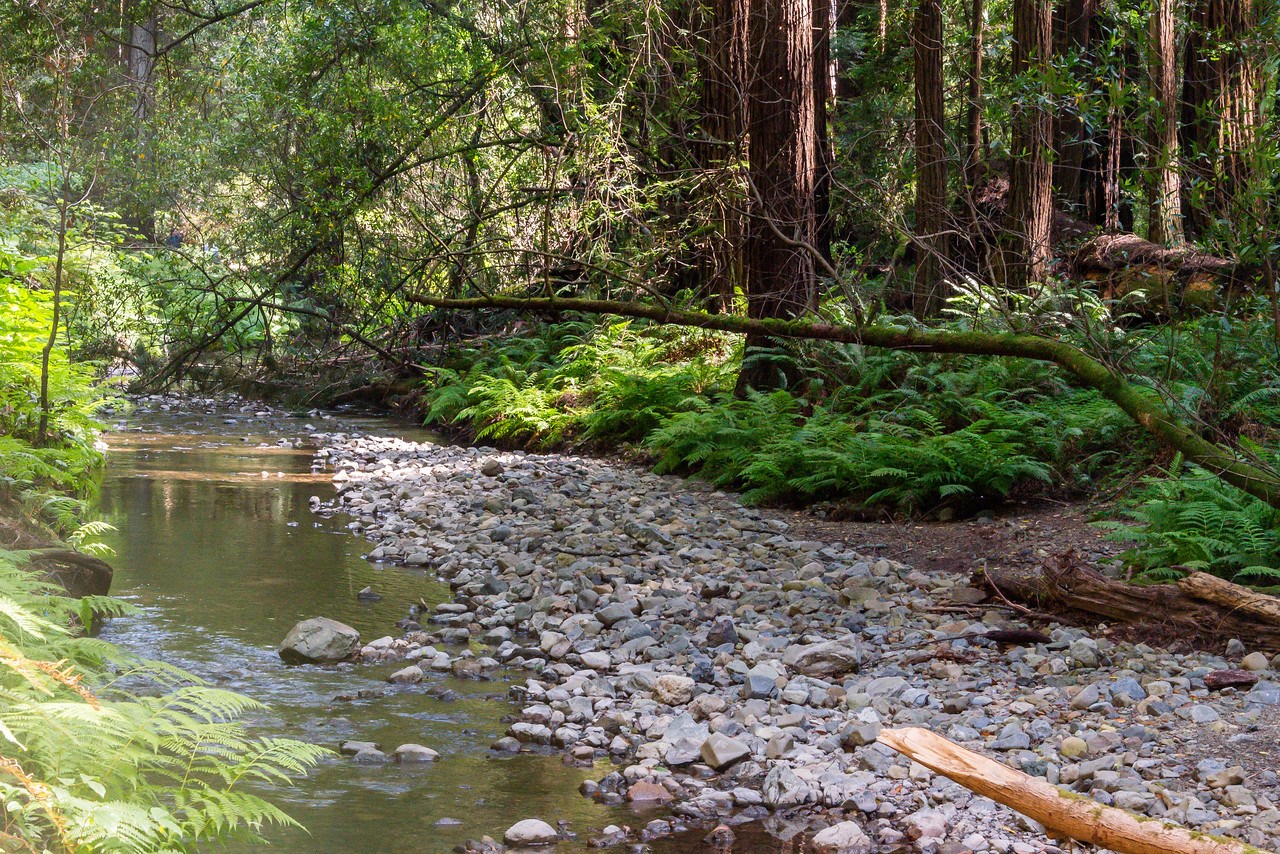Part of a series of articles titled Climate Change at Muir Woods.
Article
How Will Climate Change Impact Muir Woods?

Alison Taggart-Barone/NPS
Muir Woods National Monument is one of the most beloved and recreated forests in Marin County, California. The park is a retreat and refuge for Bay Area locals and tourists alike. The monument is 554 acres and preserves one of the last remaining old-growth coast redwood (Sequoia sempervirens) forests.
Located in the narrow valley at the base of Mt. Tamalpais, the Redwood Creek watershed runs through the monument, and empties two miles to the Pacific Ocean. Coast redwoods thrive in a moist and cool climate, relying on heavy rains during the winter months and dense fog in the dry summer months. Redwoods can drink up to 40% of their water from fog. One of the ways they do this is by capturing the moisture of the fog through their needles, a process called foliar uptake. Because of their reliance on the fog, you will only find coast redwood trees along the western coast, from Big Sur (about 3 hours south of San Francisco), to the far southern tip of the Oregon coast. Climate plays a significant role in where redwoods can grow and thrive. Ancient redwoods had a much broader geological distribution —they used to be found all throughout the northern hemisphere, from Kansas to Germany. Very gradual shifts in climate around thirty million years ago changed their distribution, resulting in the geographic range we see today. As a result, climate is an important part to consider when examining the historical and future range and distribution of coast redwood trees.
Today, the National Park Service strives to protect redwoods from being harmed by the issues facing our environment. When people burn fossil fuels, like coal, oil, or natural gas for our energy needs, we release carbon dioxide (CO2) into the Earth’s atmosphere. Carbon dioxide naturally acts like a heat trapping blanket, so the more we burn, the thicker that blanket gets which disturbs the Earth’s climate.
The impacts related to climate change are evident throughout the redwood forests of California. At Muir Woods climate change has resulted in a significant increase in temperature of 1.4 degrees Celsius per century from 1950 to 2016. Marin County has also seen an increase in temperature and drought, exacerbated by the burning of fossil fuels. Climate change has also impacted a regional wildlife decline and increase in wildfire prevalence and severity. The summer fog along the California coast that redwoods depend on has also decreased in the last century. Temperature is projected to increase at Muir Woods under all emissions scenarios. Representative Concentration Pathways (RCPs), which are emission scenarios calculated by the Intergovernmental Panel on Climate Change (IPCC), try to project future climate change scenarios based on future increased concentration of greenhouse gas in the atmosphere. A recent study from U.C. Berkeley Department of Environmental Science, Policy, and Management, predicts that rainfall is expected to increase in the coming century. It also predicts longer periods of high temperatures, which are associated with droughts, which can lead to larger wildfires and longer fire seasons. (Jordan, 2021).
Muir Woods is a part of the Golden Gate National Recreation Area (GGNRA), a National Park Service site that protects this amazing redwood forest and the different forms of life that call it home. As of 2017, GGNRA uses 100% clean and renewable energy to reduce the amount of CO2 we release through the burning of fossil fuels so that we can help significantly limit future temperature increases. The park is protecting its historical and natural resources by reducing its carbon footprint and adapting to changing conditions. And there’s a lot WE can all do to help mitigate climate change! Future generations depend on the decisions we make today. The national parks are yours to protect. Learn more about ways your community can get involved today to help us protect this beautiful forest and your own community!
For more information
Jordan, C. 2021. Climate Change at Muir Woods National Monument, Mill Valley, California, USA U.C. Berkeley Department of Environmental Science, Policy, and Management.Last updated: September 27, 2021
